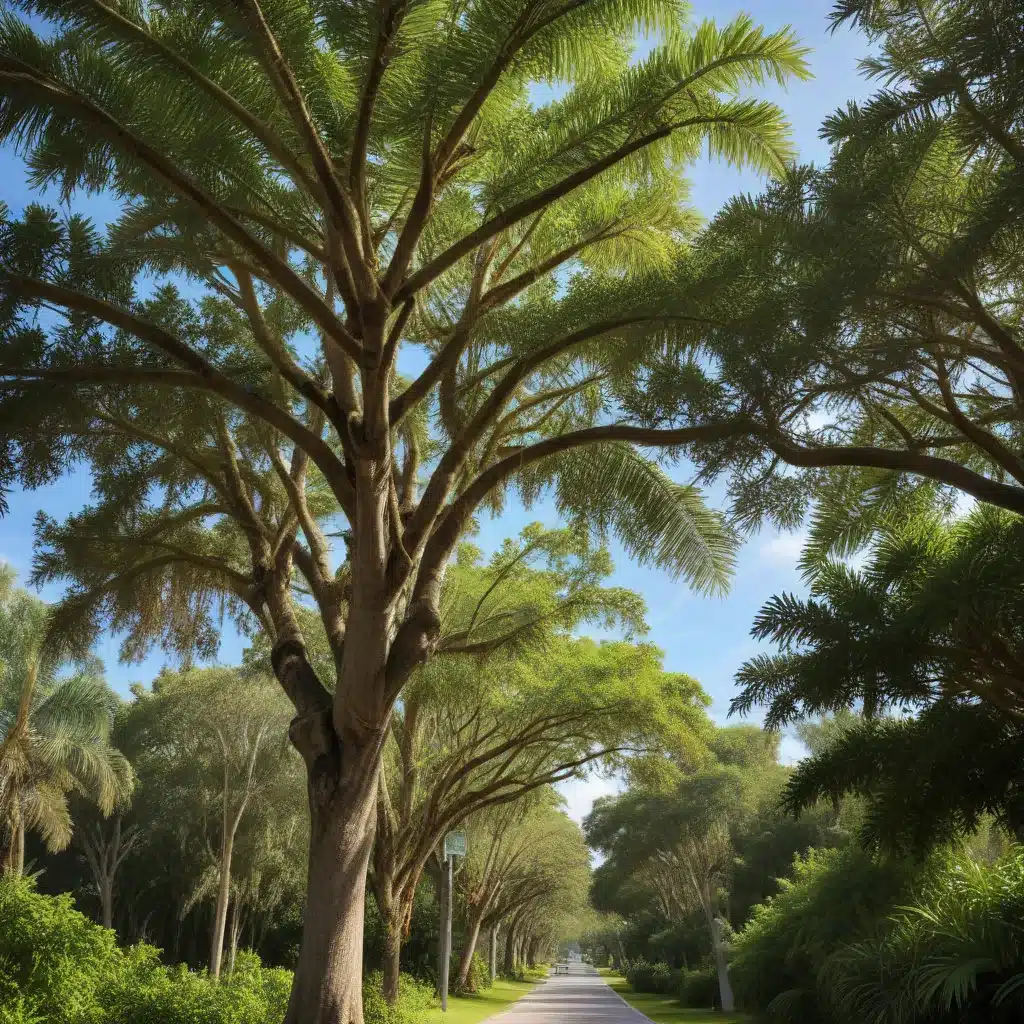
As an experienced tree care specialist in Palm Beach County, I’ve seen firsthand the incredible value that a thriving urban tree canopy can bring to our community. From boosting property values to providing much-needed shade and reducing energy costs, the benefits of a well-maintained tree population are truly remarkable. However, maintaining and expanding this vital green infrastructure is no easy feat, especially in the face of threats like severe weather, pests, and urban development.
In this article, I’ll share my personal insights and strategies for enhancing Palm Beach County’s tree canopy, drawing on my years of expertise working with both residential and commercial clients. Whether you’re a homeowner looking to enhance your landscape or a property manager tasked with maintaining the greenery on your commercial property, you’ll find practical tips and best practices to help you achieve your goals.
Protecting Our Existing Tree Assets
One of the most important aspects of urban forestry is safeguarding the trees we already have. As an arborist, I’ve seen far too many instances of trees being needlessly removed or damaged due to a lack of understanding or improper care. That’s why it’s crucial for homeowners and businesses to familiarize themselves with the local regulations and permitting requirements around tree removal and maintenance.
The Miami-Dade County website provides a comprehensive overview of the tree regulations in our region, including the distinction between “specimen” and “non-specimen” trees. Knowing which trees require a permit for removal or relocation can save you a lot of time, money, and headaches down the line. And even if a permit isn’t required, it’s always wise to consult with a certified arborist before undertaking any major pruning or tree work.
One of the biggest threats to our existing tree canopy is severe weather, particularly the hurricanes and tropical storms that are all too common in our part of Florida. That’s why it’s crucial for homeowners and property managers to take proactive steps to storm-proof their trees. This includes regular inspections to identify and address any structural weaknesses or hazards, as well as proper pruning techniques to ensure the trees are able to withstand high winds.
Expanding the Urban Forest
While protecting our existing trees is essential, we also need to be proactive about expanding Palm Beach County’s urban forest. Whether you’re a homeowner looking to add some greenery to your landscape or a commercial property owner seeking to enhance your curb appeal, there are plenty of strategies to consider.
One of the most effective approaches is to focus on planting the right tree in the right place. This means carefully selecting species that are well-suited to our local climate and soil conditions, and positioning them in a way that maximizes their long-term growth and health. The Honolulu Urban Tree Plan provides an excellent example of how cities can develop comprehensive planting guidelines to ensure the success of their urban forestry initiatives.
When it comes to selecting trees, it’s important to consider not just their aesthetic appeal, but also their practical benefits. For example, large canopy trees can provide valuable shade and reduce energy costs, while smaller ornamental trees can add visual interest and attract pollinators. By carefully curating your tree portfolio, you can create a landscape that is both beautiful and functional.
Of course, planting trees is just the first step – proper care and maintenance are essential for ensuring their long-term survival and growth. This includes regular watering, pruning, and fertilization, as well as vigilance against pests and diseases. By following best practices and consulting with certified arborists, you can give your trees the best possible chance of thriving.
Cultivating a Sustainable Urban Landscape
In addition to expanding the tree canopy, there are other strategies we can employ to create a more sustainable and eco-friendly urban landscape in Palm Beach County. One key focus area is incorporating native and drought-tolerant plant species into our landscaping plans.
The Osceola County Urban Forestry Management Plan provides an excellent overview of the benefits of using native plants, which are better adapted to our local climate and require less water and maintenance than their non-native counterparts. By embracing these resilient species, we can create landscapes that are not only beautiful, but also more environmentally responsible.
Another important consideration is the role of green infrastructure in stormwater management. Trees and other vegetation play a crucial role in absorbing and filtering runoff, reducing the risk of flooding and improving water quality. By integrating green infrastructure elements like bioswales, rain gardens, and permeable pavement into our landscape designs, we can create a more sustainable and resilient urban environment.
Of course, achieving these goals requires ongoing collaboration and education, both within the arborist and landscaping communities and with the broader public. That’s why initiatives like the St. Petersburg Tree Canopy and Urban Forest Management Plan are so valuable – they provide a comprehensive framework for engaging stakeholders, setting goals, and measuring progress.
Conclusion
As an arborist in Palm Beach County, I’m passionate about the role that trees and urban greenery play in creating a thriving, sustainable, and livable community. From enhancing property values to improving air quality and reducing flood risks, the benefits of a healthy urban forest are truly multifaceted.
By following best practices in tree care, storm preparedness, and sustainable landscaping, we can work together to expand and protect Palm Beach County’s tree canopy. Whether you’re a homeowner, a property manager, or a civic leader, there are countless ways you can contribute to this vital effort.
I encourage you to explore the resources and strategies outlined in this article, and to reach out to certified arborists like myself for personalized guidance and support. Together, we can cultivate a greener, more resilient, and more beautiful Palm Beach County – one tree at a time.



